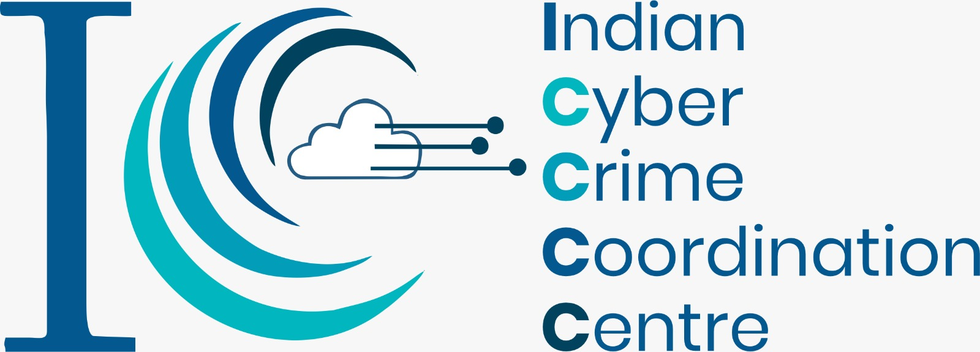Description

Disclaimer: Copyright infringement is not intended.
Context:
- The Indian Cyber Crime Coordination Centre (I4C), in collaboration with Microsoft, has blocked more than 1,000 Skype IDs involved in blackmail, extortion, and “digital arrests” by cybercriminals posing as police and law enforcement authorities.
Indian Cyber Crime Coordination Centre (I4C)
- It is an initiative of the Ministry of Home Affairs, Government of India to deal with cyber crime in the country in a coordinated and comprehensive manner.
- I4C focuses on tackling all the issues related to Cybercrime for the citizens, which includes improving coordination between various Law Enforcement Agencies and the stakeholders.
- Indian Cyber Crime Coordination Centre scheme was approved on 05th October 2018.
- The I4C was formally established on 10th January 2020 by Hon’ble Home Minister.
Objectives of I4C
- To act as a nodal point to curb Cybercrime in the country.
- To strengthen the fight against Cybercrime committed against women and children.
- Facilitate easy filing Cybercrime related complaints and identifying Cybercrime trends and patterns.
- To act as an early warning system for Law Enforcement Agencies for proactive Cybercrime prevention and detection.
- Awareness creation among the public about preventing Cybercrime.
- Assist States/UTs in capacity building of Police Officers, Public Prosecutors and Judicial Officers in the area of cyber forensic, investigation, cyber hygiene, cyber-criminology, etc.

Components of the Scheme
- National Cybercrime Threat Analytics Unit (TAU)
- This will provide a platform for law enforcement personnel, persons from private sector, academia and research organisations to work collaboratively in order to analyse all pieces of the puzzle of cybercrimes.
- Threat Analytics Unit shall also produce cybercrime threat intelligence reports and organise periodic interaction on specific cybercrime centric discussions.
- National Cybercrime Reporting
- This unit will work with already established investigation units at state and central levels as well as experts from different spheres to create expert investigation teams.
- Will be able to collaborate with partners to investigate cyber and cyber-enabled crime.
- Platform for Joint Cybercrime Investigation Team
- Its objective is to drive intelligence-led, coordinated action against key cybercrime threats and targets.
- This will facilitate the joint identification, prioritization, preparation and initiation of multi-jurisdictional measures against cybercrimes.
- National Cybercrime Forensic Laboratory (NCFL) Ecosystem
- Forensic analysis and investigation of cybercrime as a result of new digital technology and techniques.
- Develop a centre to support the investigation process.
- National Cybercrime Training Centre (NCTC)
- It will focus on standardization of course curriculum focused on cybercrimes, impact containment and investigations, imparting practical cybercrime detection, containment and reporting training on simulated cyber environments.
- Development of Massive Open Online Course to be delivered on a cloud based training platform.
- Cybercrime Ecosystem Management Unit
- Develop ecosystems that bring together academia, industry and government to operate, investigate a cybercrime basis, establish standard operating procedures, contain the impact of cybercrimes and respond to cybercrimes.
- National Cyber Research and Innovation Centre
- Track emerging technological developments, proactively predict potential vulnerabilities, which can be exploited by cybercriminals.
- To leverage the strength and expertise of all stakeholders, be it in academia, private sector or inter-governmental organizations.
Initiatives taken up
- National Cybercrime Reporting Portal (NCRP) : Launched in 2019, the portal facilitates victims/complainants to report cybercrime complaints online.
- Crime and Criminal Tracking Network & Systems (CCTNS) : CCTNS aims at creating a comprehensive and integrated system for enhancing the efficiency and effective policing at all levels and especially at the Police Station level through adoption of principles of e-Governance.
- National Automated Finger-Print Identification System (NAFIS) of National Crime Records Bureau (NCRB) has revolutionized the fingerprint recognition system in crime control, with this system, the work of tracing the involvement of interstate criminals in crimes is being done with greater ease, accuracy and efficiency across the country.
- National Cybercrime Helpline number 1930, is helping the common citizen in registering online financial frauds. All States/UTs have been boarded and more than 263 banks, e-commerce companies and others have been integrated.
- The Indian Cyber Crime Coordination Centre (I4C) and Joint Cybercrime Coordination Teams (JCCT) Jamtara, Jharkhand has launched the ‘Pratibimb’ platform which not only aggregates data but also employs geospatial mapping to pinpoint the physical locations of mobile numbers associated with cybercrimes.
Source:
https://www.thehindu.com/news/national/indian-cyber-crime-coordination-centre-blocks-more-than-1000-skype-ids/article68174483.ece
|
PRACTICE QUESTION
Q) Consider the following statements about Indian Cyber Crime Coordination Centre (I4C):
- It is an initiative of the Ministry ofDefene, to deal with cyber crime in a coordinated and comprehensive manner.
- ‘Pratibimb’ platform to pinpoint the physical locations of mobile numbers associated with cybercrimes was started by I4C and the government of west Bengal.
- National Cybercrime Threat Analytics Unit (TAU) is one of its units responsible for forensic analysis and investigation of cybercrime.
Which of the above statement’s is/are correct?
A.1 and 2 only
B.2 and 3 only
C. 1 and 3 Only
D None
Answer: D
|















